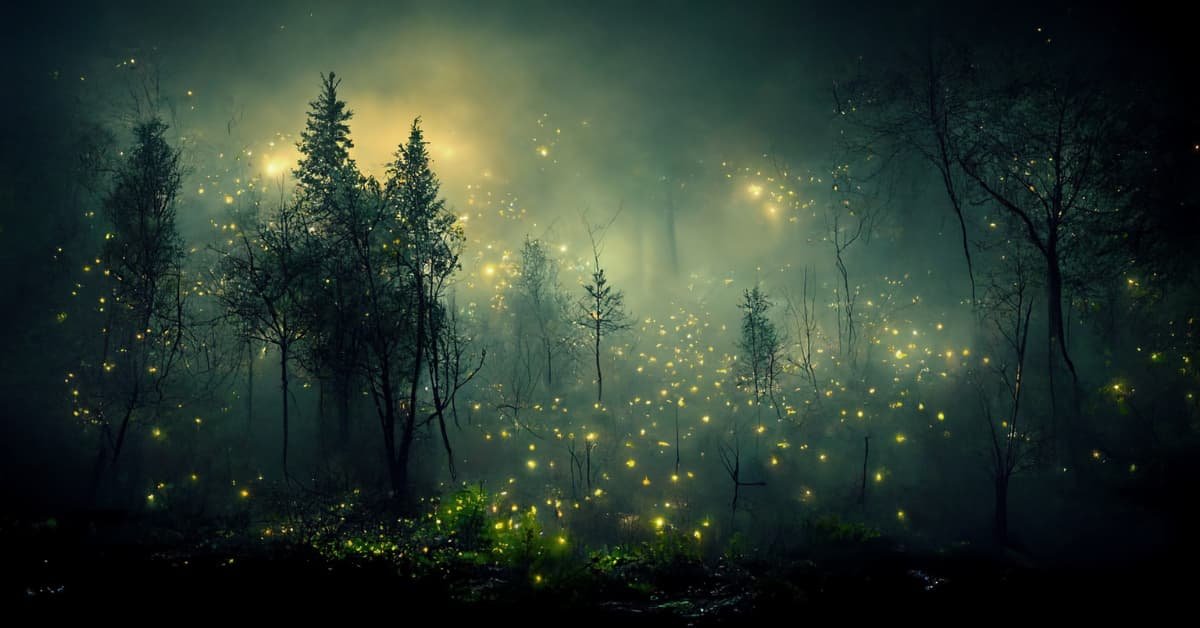
Fireflies, also known as lightning bugs, are one of the most enchanting insects found in nature.
Their warm glow illuminates the summer nights, creating a magical ambiance that is hard to resist.
These nocturnal creatures emit light to attract their mates or prey and are attracted to moisture.
In this article, we’ll delve into seven surefire ways to attract fireflies and make your yard light up with their enchanting presence.
Understanding the habitat and needs of fireflies is crucial to attracting them to your yard, and we’ll provide you with all the information you need to create a welcoming environment for these fascinating insects.
Short Summary
- Fireflies emit a warm glow to attract mates or prey and are attracted to moisture, making letting the grass grow and adding damp, dead wood ideal habitats.
- Adding water features such as ponds and having pine trees provide cover and habitat can also attract fireflies during mating season.
- Fireflies are nocturnal insects that rest on tall blades of grass during the day and are susceptible to pesticides, but their larvae feed on common garden pests.
- Attracting fireflies permanently to a yard requires employing a variety of strategies such as avoiding chemical fertilizers and pesticides, keeping soil and plants well-watered, and turning off porch lights at night to avoid diminishing their light patterns.
About Fireflies
Fireflies, also known as lightning bugs, emit a warm glow to attract mates or prey. This bioluminescence is produced through a chemical reaction in their bodies, and the light can vary in color based on the species.
Fireflies are nocturnal insects that rest on tall blades of grass during the day and are attracted to moist environments, preferring shrubbery and tall grass.
Unfortunately, the overall population of fireflies is declining due to loss of habitat.
Firefly conservation efforts include adding water features, such as a pond, to attract them during mating season, and letting the grass grow, and adding damp, dead wood to provide ideal habitats.
It is also crucial to avoid using chemical fertilizers and pesticides and to keep soil and plants well-watered.
Overall, attracting fireflies permanently to a yard requires employing a variety of strategies to provide them with the natural environments they need to thrive.
Habitat and Needs
Creating a suitable habitat that includes moist environments, natural foliage, and ample protection is crucial for attracting and preserving fireflies in a yard.
Fireflies are nocturnal insects that require shaded areas during the day and moist environments for feeding and mating.
Providing a water feature, such as a pond, can attract fireflies during their mating season while letting the grass grow and adding damp, dead wood can create ideal habitats for their larvae.
Pine trees can also provide cover and suitable habitat for fireflies.
Outdoor lighting can have a negative impact on the presence of fireflies.
It is recommended to turn off porch lights at night to avoid diminishing the light pattern that fireflies use to communicate.
Avoiding the use of chemical fertilizers and pesticides and keeping soil and plants well-watered can also create a suitable environment for fireflies.
Proper gardening techniques, such as letting grass grow and adding natural foliage, can also attract fireflies permanently to a yard.
By employing a variety of strategies to create suitable habitats, individuals can help preserve the overall population of fireflies and enjoy their beautiful light displays.
Facts about Fireflies

As nocturnal insects, fireflies rest on tall blades of grass during the day and emit a cold light that varies in color based on their species.
One of the most fascinating aspects of firefly behavior is their ability to use their glow to attract mates or prey.
Fireflies emit a warm glow that is often seen during their mating season, where they use their light patterns to communicate with potential mates.
This process is called bioluminescence, and it involves the production of light through a chemical reaction that occurs in specialized cells in their bodies.
Here are three interesting facts about firefly mating habits that may evoke an emotional response in the audience:
- Fireflies have a unique way of attracting mates that involves flashing their light in a specific pattern that is unique to their species.
- Female fireflies are often attracted to males that have brighter and more consistent flashes, as this is a sign of good health and genetic quality.
- Some firefly species have been known to synchronize their flashing patterns with other fireflies in the area, creating a mesmerizing display that is often referred to as a ‘light show.’
This phenomenon is believed to be a form of communication and mating behavior, as the synchronized flashing can attract more females and increase the chances of successful reproduction.
Threats to Fireflies
The overall population of fireflies is declining due to the loss of their natural habitats.
As urbanization continues to expand, the number of areas suitable for fireflies to thrive in is rapidly decreasing.
The use of pesticides and artificial light sources also contributes to their decline.
Fireflies are highly susceptible to pesticides, which can kill them and their larvae.
Additionally, artificial light sources can interfere with their mating signals, making it difficult for them to find mates.
Conservation efforts are being made to help protect fireflies and their habitats.
One approach is to create firefly-friendly habitats by adding natural features such as ponds, meadows, and shrubbery.
Additionally, reducing the use of pesticides and preserving natural areas can help to protect fireflies and other insects.
Education and awareness campaigns can also help to promote the importance of firefly conservation and the role they play in our ecosystems.
By taking these steps, we can help to ensure that future generations will be able to enjoy the beauty of these magical insects.
Tips for Attracting Fireflies
One effective method for encouraging the presence of fireflies in a backyard involves avoiding the use of chemical fertilizers and pesticides, as they can harm both the insects and their larvae.
A case study of a family who switched to organic gardening practices reported an increase in firefly activity.
Additionally, keeping soil and plants well-watered can create a suitable environment for fireflies to thrive.
Here are three gardening techniques that can help attract fireflies to a backyard:
- Incorporate native plants and flowers: Fireflies are attracted to natural environments. Including native trees, shrubs, and flowers in a backyard can create a suitable habitat for these insects.
- Limit backyard lighting: Artificial light can disrupt the light patterns of fireflies and make it difficult for them to communicate and mate. Turning off porch lights and limiting other sources of light can help attract fireflies to a backyard.
- Provide suitable hiding places: Fireflies rest in shaded areas during the day and need adequate protection. Shrubs, tall grass, and other vegetation can provide cover for these insects.
By implementing these gardening techniques, homeowners can create a suitable environment for fireflies to thrive in their backyard.
FAQs:
Can fireflies be found in all parts of the world?
Fireflies are found on every continent except Antarctica, with the highest diversity in tropical and subtropical regions. They inhabit a variety of habitats, including forests, fields, wetlands, and deserts. Firefly populations are declining worldwide due to habitat loss and light pollution.
How long do fireflies live?
The life span of fireflies varies based on species and environmental factors but generally ranges from several days to several weeks. Habitat distribution is heavily influenced by moisture, foliage, and the availability of prey, with most species found in warm, humid environments.
Do fireflies have any predators?
Fireflies have predators including birds, spiders, and insects. However, their overall population decline is mainly due to habitat loss from development and pesticide use. Firefly conservation efforts are crucial for their survival.
Are there any known medicinal properties associated with fireflies?
Scientific research has revealed that fireflies contain luciferase enzymes that are used in bioluminescence. This has inspired the development of Firefly-inspired medicine, which involves using luciferase enzymes for various applications, including cancer detection and imaging.
Are there any cultural or mythological beliefs associated with fireflies?
Fireflies hold significant cultural and mythological beliefs in many parts of the world. They are often associated with folklore, symbolism, and legends of love, hope, and transformation. In some cultures, they represent the souls or spirits of the departed.



